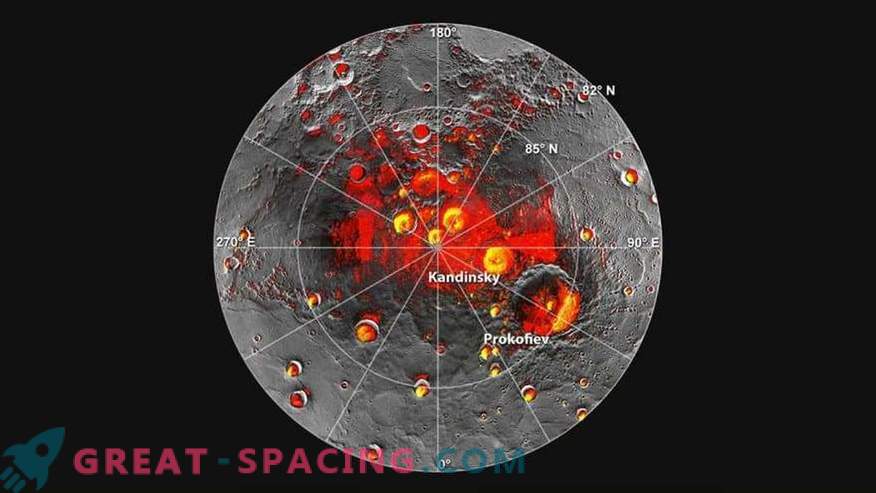
It is logical to assume: the closer you are to the Sun, the more heat you get and the hotter you get. That is, the first planet should be a record for temperature. It sounds good, but it does not work with Mercury. Why and who won first place?
This weird Mercury
The planet is distant from the Sun by an average of 58 million km. Scientists carefully consider this world, because it has a strange characteristics. For example, it is a champion in speed of rotation around a star (88 days). In addition, it is the first planet from the Sun, and even the smallest (it used to be Pluto, but since 2006 it has been considered a dwarf planet).
Let's not forget about the anomalously large core, the second largest density after the Earth in our system, as well as the appearance, which more closely resembles the Earth's Moon. Why did he not get the championship in temperature?
Why not the hottest?

The North Pole of the planet, captured by the MESSENGER. Areas in the shade are red, and ice is yellow
It is important to understand that it is really hot on Mercury. The surface on the day side can warm up to 430 ° C. However, on the planet there is no dense atmospheric layer that could hold heat and evenly distribute around the planet. Because of this, the reverse side (in the shade) is cooled to -190 ° C. It is also worth remembering about the slow axial rotation, where night and day cover 58 days each. This fact can be used for colonization, because the settlement on wheels can constantly move around and be in an acceptable temperature interval between the day and night sides.
Interestingly, there are areas that are never illuminated by sunlight at all, because the axial tilt is small. Researchers suspect that ice deposits may be hiding in these areas (especially craters). Yes, there is ice on the first planet from the Sun !
This began to speak even in 1991, since the surface showed dark spots on the photographs. Confirmation received with the flight of the spacecraft MESSENGER. His neutron spectroscope was able to measure the average hydrogen concentration, which converged with suspicions about the presence of ice. It is believed that thickness of the ice layer in the crater reaches a couple of tens of centimeters.
The Hottest Planet of the Solar System
The title of the hottest planet goes to Venus, which is distant from the Sun at 108 million km (average distance) and warms at 462 ° C. But the planet has its own cunning. It is all about the presence of a dense atmospheric layer, because of which the greenhouse effect was formed. The temperature is evenly distributed over the surface, because of which we have a bright visualization of hell with acid rain and sulfur clouds. Venus is literally covered with a warm blanket, which is not going to give off heat so easily.
Postscript
As you can see, the planets are not always amenable to human logic. Therefore, in the study of any issue you need to carefully consider all existing factors. Explore space further and learn that even in the vastness of the solar system you can find many amazing anomalies.









































